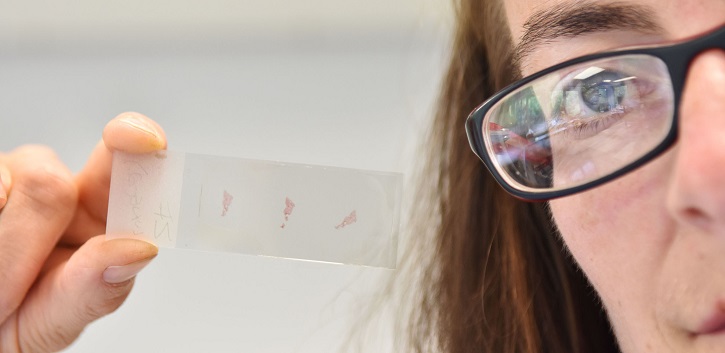Scientists to rethink how they reconstruct the colour of fossils after UCC-led discovery

A UCC-led discovery of new sources of the pigment melanin will force scientists to rethink how they reconstruct the colour of fossil birds, reptiles and dinosaurs.
Many recent studies of fossil colour have assumed fossilized granules of melanin – melanosomes – come from the skin. But new evidence shows that other tissues – such as the liver, lungs, and spleen – can also contain melanosomes, suggesting that fossil melanosomes may not provide information on fossil colour.
Colours of dinosaurs thrown into doubt by new UCC study https://t.co/MWPtGX5ISZ via @IrishTimes
— UCC Ireland (@UCC) July 23, 2018
The study, published today in the journal Nature Communications, is led by UCC’s Dr Maria McNamara in collaboration with her PhD student Valentina Rossi, Dr Patrick Orr from UCD, and an international team of palaeontologists from the UK and Japan.
‘It’s absolutely critical that we understand the origins of melanosomes in fossils if we want to produce accurate reconstructions of the colours of ancient animals’ @UCC @ucddublin #palaeontology https://t.co/OzEECdBMjP
— SiliconRepublic (@siliconrepublic) July 23, 2018
"It’s absolutely critical that we understand the origins of melanosomes in fossils if we want to produce accurate reconstructions of the colours of ancient animals," said Dr McNamara.
Colour of dinosaurs different than first thought, University College Cork research claims https://t.co/1gNDoN9KfV pic.twitter.com/PMx7zKcM5Q
— Jamilia Brane (@JamiliaBrane) July 22, 2018
The team studied internal tissues in modern frogs with powerful microscopes and chemical techniques to show that internal melanosomes are highly abundant.
“This means that these internal melanosomes could make up the majority of the melanosomes preserved in some fossils,” said collaborator Prof. Mike Benton at the University of Bristol.
New sources of melanin pigment shake up ideas about fossil animals' #colour @NatureComms https://t.co/7nagjJklcO
— Phys.org (@physorg_com) July 23, 2018
The team also used decay experiments and analysed fossils to show that the internal melanosomes can leak into other body parts during the fossilization process, “like snowflakes inside a snow globe”, said Dr Orr.
There is a way, however, to tell the difference between melanosomes from internal organs and the skin. “The size and shape of skin melanosomes is usually distinct from those in internal organs", said Dr McNamara. "This will allow us to produce more accurate reconstructions of the original colours of ancient vertebrates.”
The team used a unique chemical assay for detection of melanin in modern and fossil materials developed by collaborators Profs Kazumasa Wakamatsu and Shosuke Ito from Fujita Health University in Japan.
For more on this story contact:
Lynne Nolan, Media & PR Officer, UCC: 087 210 1119 or lynne.nolan@ucc.ie.
